Top Five Personal Safety Threats in Urban Areas
Living in an urban environment can be exhilarating, offering a vibrant mix of cultures, opportunities, and experiences. However, it also comes with its own set of challenges, particularly when it comes to personal safety. In bustling cities, the risks can often feel magnified, making it crucial for residents and visitors alike to be aware of the potential threats that lurk around every corner. From crime rates to environmental hazards, understanding these risks is the first step in ensuring your safety. This article dives deep into the top five personal safety threats faced in urban areas, equipping you with the knowledge to navigate the urban jungle with confidence and caution.
Understanding current crime statistics and trends in urban areas is crucial for recognizing potential threats and developing effective prevention strategies to enhance personal safety. Cities often have fluctuating crime rates, influenced by various factors such as economic conditions, policing practices, and community engagement. For instance, a city experiencing economic downturns may see a spike in property crimes, while areas with strong community programs often report lower crime rates. By staying informed about these trends, individuals can better prepare themselves and take proactive steps to protect their well-being.
Street crimes, such as muggings and pickpocketing, pose serious risks in urban settings. Awareness of these dangers can help individuals take proactive steps to protect themselves. Imagine walking down a busy street, engrossed in your phone; suddenly, you feel a tug on your bag. This scenario is all too common in urban environments where distractions can make you an easy target. Recognizing the types of street crimes prevalent in your area is essential. Here are some common forms:
- Theft
- Assault
- Vandalism
Each of these crimes requires distinct awareness and prevention strategies to ensure personal safety in urban environments. For example, knowing when and where these crimes are most likely to occur can empower you to make safer choices.
Adopting preventive measures, such as staying in well-lit areas and avoiding distractions, can significantly reduce the risk of becoming a victim of street crime. It’s like wearing a seatbelt; it may seem unnecessary at times, but when the unexpected happens, you’ll be glad you took that precaution. Additionally, being aware of your surroundings and trusting your instincts can be powerful tools in avoiding dangerous situations.
Community initiatives aimed at crime prevention can foster a safer urban environment, encouraging residents to collaborate and support one another in enhancing personal safety. Think of community watch programs as a neighborhood's safety net, where everyone looks out for one another. Engaging with local organizations can not only provide resources but also create a sense of belonging and security.
Public transportation systems can expose individuals to various safety threats, including harassment and theft. Understanding these risks is essential for safe commuting. Whether you’re crammed into a subway car during rush hour or waiting for a bus late at night, being aware of your surroundings can make all the difference. Statistics show that many urban dwellers rely on public transit daily, making it imperative to implement safety measures.
Implementing safety tips, such as staying alert and choosing busy transit times, can help commuters navigate public transportation more securely. Think of it as a game of chess; being strategic about your moves can help you avoid danger. For instance, try to sit near the driver or in well-populated areas of the bus or train, and always keep your belongings secure and close to you.
Familiarizing oneself with emergency protocols on public transportation can empower individuals to respond effectively in threatening situations. Knowing how to contact authorities or where the emergency exits are located can be invaluable. It's like having a life jacket on a boat; you may never need it, but it’s essential to be prepared just in case.
Urban areas often present environmental hazards, such as poorly maintained infrastructure and traffic dangers, which can pose significant risks to personal safety. Navigating a city can feel like walking through a minefield, where one wrong step could lead to an accident. Being aware of your surroundings and understanding the potential hazards can significantly reduce risks.
Being aware of traffic patterns and pedestrian safety rules can help individuals navigate urban areas more safely and reduce the likelihood of accidents. Always look both ways before crossing the street and use pedestrian crossings whenever possible. It’s a simple yet effective way to protect yourself in a bustling city.
Effective urban planning plays a crucial role in minimizing environmental hazards and enhancing overall personal safety for residents and visitors alike. Cities that prioritize pedestrian-friendly designs, well-lit streets, and accessible public spaces contribute to a safer environment. It's like building a house; a solid foundation ensures stability and safety for everyone who resides within.
Understanding the social dynamics in urban areas, including gang activity and social unrest, is essential for recognizing potential threats to personal safety. The social fabric of a city can be complex, and being aware of the underlying issues can help you navigate it more safely.
Engaging with local communities can help individuals build networks of support, enhancing safety through shared vigilance and resources. Think of it as forming a safety net; the more people involved, the stronger it becomes. By participating in local events and initiatives, you can foster relationships that contribute to a safer environment.
Developing conflict resolution skills can empower individuals to navigate potentially dangerous social situations more effectively, reducing the risk of escalation. It’s like having a toolkit; the more tools you have, the better equipped you are to handle various situations. Learning how to defuse conflicts can be a game-changer in urban settings.
Advancements in technology offer innovative solutions for enhancing personal safety in urban areas, from personal safety apps to surveillance systems. Embracing technology can feel like having a superhero on your side, ready to assist you in times of need. The integration of smart technologies into daily life can significantly improve personal security.
Mobile safety applications can provide users with tools for emergency alerts, location sharing, and quick access to local resources, enhancing personal security. These apps are like having a personal bodyguard in your pocket, ready to help you navigate through any potential threats.
Integrating smart technologies into urban infrastructure can improve safety measures, such as enhanced lighting and surveillance, contributing to a safer urban environment for all. Imagine walking down a street illuminated by smart lights that adjust based on foot traffic; it’s a simple yet effective way to enhance safety in urban spaces.
Q: What should I do if I witness a crime?
A: If you witness a crime, ensure your safety first, then contact local authorities immediately. Provide as much detail as possible about the incident.
Q: How can I stay safe while using public transportation?
A: Stay alert, keep your belongings secure, and choose busy transit times. Familiarize yourself with emergency protocols.
Q: What community programs can help improve safety?
A: Look for community watch programs, neighborhood associations, and local safety initiatives that encourage residents to collaborate on safety efforts.
Q: Are there apps that can help with personal safety?
A: Yes, there are various mobile safety apps available that offer emergency alerts, location sharing, and access to local resources.
Q: How can urban planning affect my safety?
A: Effective urban planning can minimize hazards by creating pedestrian-friendly spaces, improving infrastructure, and ensuring adequate lighting, enhancing overall safety.

Crime Rates and Trends
Understanding current crime statistics and trends in urban areas is crucial for recognizing potential threats and developing effective prevention strategies to enhance personal safety. Urban environments are often bustling with activity, which can sometimes create a false sense of security. However, the reality is that crime rates can fluctuate significantly, depending on various factors such as location, time of year, and socio-economic conditions. For instance, major cities often report higher crime rates due to their dense populations and diverse demographics.
Recent studies indicate that certain types of crime, including violent offenses and property crimes, have seen fluctuations in their occurrence. According to the FBI's Uniform Crime Reporting (UCR) program, cities have experienced both increases and decreases in specific crime categories over the past few years. For example, while some cities have reported a rise in theft and burglary, others have seen a decline in violent crimes like assault and robbery.
To provide a clearer picture of crime trends, let’s take a look at some statistics from recent years:
| Crime Type | 2021 Rate | 2022 Rate | Change (%) |
|---|---|---|---|
| Violent Crime | 400 incidents per 100,000 people | 380 incidents per 100,000 people | -5% |
| Property Crime | 2,500 incidents per 100,000 people | 2,600 incidents per 100,000 people | +4% |
| Theft | 1,200 incidents per 100,000 people | 1,300 incidents per 100,000 people | +8% |
This table illustrates the shifting landscape of crime in urban settings, highlighting the importance of staying informed about local trends. Understanding these statistics can empower individuals to make informed decisions about their safety. For instance, if theft is on the rise in a particular area, residents may want to adopt more cautious behaviors, such as securing their belongings and being more aware of their surroundings.
Moreover, it's essential to consider how seasonality affects crime rates. Many urban areas experience spikes in certain crimes during summer months when more people are out and about. Similarly, holidays can lead to increased property crimes, as people are often preoccupied with festivities and may overlook their personal safety. By being aware of these trends, individuals can better prepare themselves and take proactive measures to mitigate risks.
In conclusion, staying updated on crime rates and trends is not just about statistics; it's about understanding the environment you live in. By being informed, individuals can take appropriate actions to protect themselves and their communities. Knowledge is power, and in the realm of personal safety, it can make all the difference.

Street Crime Awareness
Street crime is an ever-present reality in urban environments, and being aware of its dangers is the first step towards ensuring personal safety. Understanding the types of street crimes that frequently occur can empower individuals to take proactive measures. Urban areas, bustling with life, can sometimes feel like a double-edged sword; while they offer vibrant experiences, they also harbor risks that can catch the unsuspecting off guard. Whether it's a quick trip to the store or a late-night walk home, it's crucial to stay vigilant.
Common street crimes include muggings, pickpocketing, and vandalism. Each of these crimes has its own set of characteristics and prevention strategies. For instance, muggings often occur in secluded areas, making it essential to avoid poorly lit or deserted streets. On the other hand, pickpocketing typically happens in crowded places where distractions are abundant, such as public transportation or busy shopping districts. Being aware of your surroundings and recognizing the signs of potential danger can significantly reduce your risk of becoming a victim.
Let's break down some of the most prevalent types of street crimes:
| Type of Crime | Description | Prevention Strategies |
|---|---|---|
| Muggings | Robbery that involves physical force or intimidation. | Avoid isolated areas, stay alert, and walk confidently. |
| Pickpocketing | Theft of personal belongings from a person, often unnoticed. | Keep valuables secure and be cautious in crowded places. |
| Vandalism | Deliberate destruction of property. | Report suspicious behavior and support community watch programs. |
Adopting preventive measures is not just about being cautious; it's about cultivating a mindset of awareness. For example, when walking in urban areas, always choose well-lit paths and avoid distractions like texting or wearing headphones. These small changes in behavior can make a significant difference. Additionally, consider engaging in local community programs aimed at crime prevention. These initiatives not only enhance personal safety but also foster a sense of unity among residents.
To further bolster your street crime awareness, here are some effective preventive measures:
- Stay Alert: Keep your head up and be aware of those around you.
- Travel in Groups: There’s safety in numbers; try not to walk alone, especially at night.
- Trust Your Instincts: If something feels off, don’t hesitate to change your route or seek help.
By implementing these strategies, you can significantly reduce your risk of falling victim to street crime. Remember, awareness is your first line of defense. The more informed you are about the potential threats in your environment, the better equipped you'll be to navigate urban life safely.
Participating in community programs can also play a pivotal role in enhancing personal safety. These initiatives often encourage residents to collaborate and support one another. By joining neighborhood watch groups or attending local safety workshops, individuals can share experiences, learn from one another, and develop a collective approach to crime prevention. A strong community can deter crime simply through visibility and engagement.
Finally, knowing how to report crimes and access local resources is essential. Many urban areas have dedicated hotlines or apps that allow residents to report suspicious activity quickly. Familiarizing yourself with these resources not only empowers you to seek help when needed but also contributes to the overall safety of your community. Remember, you are not alone; there are systems in place designed to support you.
Q: What should I do if I witness a crime?
A: If you witness a crime, try to remain calm. Note the details of the incident and contact local authorities as soon as it is safe to do so. Your information could be crucial in helping to apprehend the suspect.
Q: How can I stay safe while using public transportation?
A: Always stay alert, avoid distractions, and try to travel during busy hours. If you feel uncomfortable, sit near the driver or other passengers.
Q: Are community safety programs effective?
A: Yes! Community safety programs can significantly reduce crime rates by fostering a sense of vigilance and cooperation among residents.

Types of Street Crimes
When we think about street crime, it’s essential to recognize that it’s not just a single entity but a myriad of different offenses that can occur in urban environments. Each type of street crime presents its own unique challenges and requires specific strategies for prevention and awareness. Some of the most common types of street crimes include theft, assault, and vandalism. Understanding these can help you stay vigilant and better protect yourself.
Theft is perhaps the most prevalent form of street crime. This can range from simple pickpocketing to more serious offenses like car theft. Imagine walking down the street, distracted by your phone, and suddenly realizing your wallet is missing. It can happen in an instant! To combat theft, it’s crucial to be aware of your surroundings and keep your belongings secure. For instance, wearing your bag across your body rather than slung over one shoulder can help deter thieves.
Next, we have assault, which can take many forms, including verbal harassment to physical attacks. Assault is particularly concerning because it not only threatens your physical safety but can also have lasting psychological effects. It’s vital to trust your instincts; if a situation feels off, it probably is. Engaging in self-defense classes can also empower you, giving you the confidence to handle threatening situations more effectively.
Lastly, vandalism is another type of street crime that, while it may not directly threaten personal safety, can contribute to an overall feeling of insecurity in a neighborhood. Graffiti, broken windows, and damaged property can create an atmosphere of neglect, which can, in turn, attract more serious crimes. Communities can combat vandalism by fostering a sense of ownership and pride in their neighborhoods, organizing clean-up days, and encouraging local art initiatives that beautify public spaces.
To summarize, here’s a quick breakdown of the types of street crimes:
| Type of Crime | Description |
|---|---|
| Theft | Includes pickpocketing, shoplifting, and car theft. |
| Assault | Can range from verbal threats to physical attacks. |
| Vandalism | Destruction of property, often leading to a sense of neglect. |
By understanding these various types of street crimes, individuals can better prepare themselves and take proactive steps to enhance their personal safety. Awareness is the first line of defense, and by staying informed, you can navigate urban environments with greater confidence.
Q: What should I do if I witness a street crime?
A: If you witness a crime, it’s essential to prioritize your safety first. If it’s safe to do so, you can report it to the authorities by calling the police. Providing as much detail as possible, such as the location, time, and description of the individuals involved, can help law enforcement address the situation effectively.
Q: How can I protect myself from theft?
A: To protect yourself from theft, always be aware of your surroundings. Keep your belongings secure and avoid displaying valuable items in public. Using anti-theft bags and practicing situational awareness can significantly reduce your risk of becoming a victim.
Q: Are self-defense classes worth it?
A: Absolutely! Self-defense classes can provide valuable skills and boost your confidence in handling potentially dangerous situations. They teach you how to assess threats and respond effectively, which can be empowering.

Preventive Measures
When it comes to personal safety in urban environments, being proactive is key. The hustle and bustle of city life can sometimes make individuals feel invulnerable, but the reality is that there are several everyone can take to reduce their risk of becoming a victim of street crime. One of the simplest yet most effective strategies is to always stay in well-lit areas. Darkness can provide cover for criminals, so if you find yourself walking alone at night, stick to the streets that are illuminated and frequented by others.
Another important tip is to avoid distractions. In our tech-savvy world, it’s all too easy to get absorbed in your phone or headphones, making you an easy target. Try to keep your head up and stay aware of your surroundings. This not only helps you notice any suspicious activities but also sends a message to potential wrongdoers that you are alert and not an easy target.
Additionally, consider the route you take. If possible, choose paths that are more populated and have a visible presence of security personnel or surveillance cameras. This can deter crime and provide you with a sense of safety. It’s also helpful to familiarize yourself with the area you’re in; knowing where the nearest police station or emergency services are located can give you peace of mind.
Community initiatives can also play a significant role in enhancing personal safety. Programs that promote neighborhood watch schemes or community patrols can foster a sense of collective responsibility among residents. When people look out for one another, it builds a safer environment for everyone. Joining or forming such groups can empower individuals and create a strong support network.
In addition to these measures, it’s crucial to have a plan in case of emergencies. This includes knowing how to report a crime or access local resources. Keep emergency numbers saved in your phone, and consider downloading safety apps that provide quick access to help. Being prepared can make all the difference when faced with unexpected situations.
- What should I do if I feel unsafe in a public area?
If you feel unsafe, try to move to a crowded or well-lit area. Trust your instincts and seek help from law enforcement or security personnel if necessary. - Are there specific times when crime rates are higher?
Yes, crime rates can increase during late-night hours, particularly in poorly lit areas. It's advisable to stay vigilant during these times. - How can I contribute to my community’s safety?
You can participate in community watch programs, attend local safety meetings, and encourage your neighbors to look out for one another. - What should I include in an emergency plan?
Your emergency plan should include important contact numbers, meeting points, and a list of safe places to go in case of danger.

Community Programs
Community programs play a vital role in enhancing personal safety in urban environments. These initiatives not only foster a sense of belonging among residents but also promote collective vigilance against crime. When individuals come together, they create a network of support that can deter potential threats. Imagine walking down a street where neighbors know each other and look out for one another; this creates a safer atmosphere for everyone.
One of the key aspects of community programs is their ability to engage residents in proactive safety measures. For instance, neighborhood watch groups are formed to monitor local activities and report suspicious behavior to authorities. These groups can also organize events that educate the community about safety practices, such as self-defense workshops or emergency preparedness training. By participating in such programs, individuals not only enhance their own safety but also contribute to a culture of awareness and responsibility.
Moreover, community programs often collaborate with local law enforcement agencies to address crime effectively. This partnership can lead to various initiatives, such as:
- Safety Audits: Residents can work with police to identify high-risk areas in their neighborhoods and develop strategies to mitigate those risks.
- Crime Prevention Workshops: These sessions educate community members about common crimes and how to prevent them, empowering individuals to take charge of their own safety.
- Emergency Response Training: Programs that teach CPR, first aid, and emergency response protocols can prepare residents to act swiftly in critical situations.
Additionally, community programs often focus on youth engagement, recognizing that educating young people about safety can have long-term benefits. By involving youth in positive activities, such as sports leagues or arts programs, communities can reduce the likelihood of juvenile delinquency and foster a sense of purpose among younger generations.
In conclusion, community programs are essential for creating a safer urban environment. They empower residents to take an active role in their safety, build strong relationships with their neighbors, and collaborate with law enforcement. When communities unite, they not only enhance personal safety but also create a more vibrant and connected urban space.
Q1: What are community programs?
A community program is an organized effort to bring residents together to address local issues, including safety concerns. These programs can include neighborhood watch groups, educational workshops, and youth engagement initiatives.
Q2: How can I get involved in community safety programs?
You can get involved by attending local meetings, joining neighborhood watch groups, or volunteering for safety workshops. Check with your local community center or law enforcement agency for available programs.
Q3: Are community programs effective in reducing crime?
Yes, research has shown that community programs can significantly reduce crime rates by fostering a sense of community and encouraging residents to look out for one another.
Q4: Can community programs help build relationships with law enforcement?
Absolutely! Community programs often involve collaboration with police, which helps build trust and understanding between law enforcement and residents.

Reporting and Resources
Understanding how to report crimes and access local resources is crucial for individuals who wish to enhance their personal safety in urban environments. When faced with a threatening situation or witnessing a crime, knowing the right steps to take can not only help you but also contribute to the safety of your community. It's like having a safety net; when you know how to reach out for help, you can feel more secure and empowered.
First and foremost, it's essential to familiarize yourself with your local law enforcement agency. Most cities have a dedicated police department that provides various resources for reporting crimes, including non-emergency hotlines and online reporting systems. For example, many police departments now offer mobile apps that allow citizens to report suspicious activities or crimes directly from their smartphones. This can be a game-changer, as it allows for quick reporting without needing to visit a police station.
In addition to law enforcement, there are numerous community resources available to support individuals in need. Local non-profits and community organizations often provide safety workshops, self-defense classes, and educational seminars on crime prevention strategies. These programs can equip residents with the skills and knowledge necessary to navigate their urban environment safely. Remember, being proactive is just as important as knowing how to react in emergencies.
Furthermore, it’s beneficial to connect with neighborhood watch groups or community safety initiatives. These groups typically foster a sense of camaraderie among residents, encouraging them to look out for one another. They often share information about local crime trends, safety tips, and resources available to residents. Participating in such groups not only enhances personal safety but also strengthens community bonds.
Lastly, if you ever find yourself in a situation where you need immediate help, don't hesitate to call emergency services. In the U.S., dialing 911 will connect you to police, fire, or medical assistance. However, it’s important to use this service wisely—reserving it for true emergencies ensures that resources are available for those in dire need.
To summarize, being informed about reporting mechanisms and available resources can significantly enhance your personal safety in urban areas. Here’s a quick recap of essential contacts and resources:
| Resource | Description | Contact Information |
|---|---|---|
| Local Police Department | Report crimes, suspicious activities, and emergencies. | [Your Local Police Number] |
| Community Safety Programs | Workshops and resources for crime prevention. | [Local Non-Profit Contact] |
| Neighborhood Watch | Community group focused on safety and vigilance. | [Neighborhood Watch Contact] |
| Emergency Services | Immediate assistance for life-threatening situations. | 911 |
In conclusion, staying informed and connected with local resources is a key strategy in enhancing personal safety. Whether through crime reporting or community engagement, every step taken towards awareness is a step towards a safer urban environment.
- What should I do if I witness a crime? Always prioritize your safety first. If it's safe to do so, note details and report it to the police as soon as possible.
- How can I find local safety programs? Check your city’s official website or local community boards for information on safety workshops and programs.
- Are neighborhood watch groups effective? Yes, they can significantly enhance community safety by fostering vigilance and cooperation among residents.
- What information should I have ready when reporting a crime? Details such as the location, time, description of the suspect, and any other relevant information can help law enforcement.
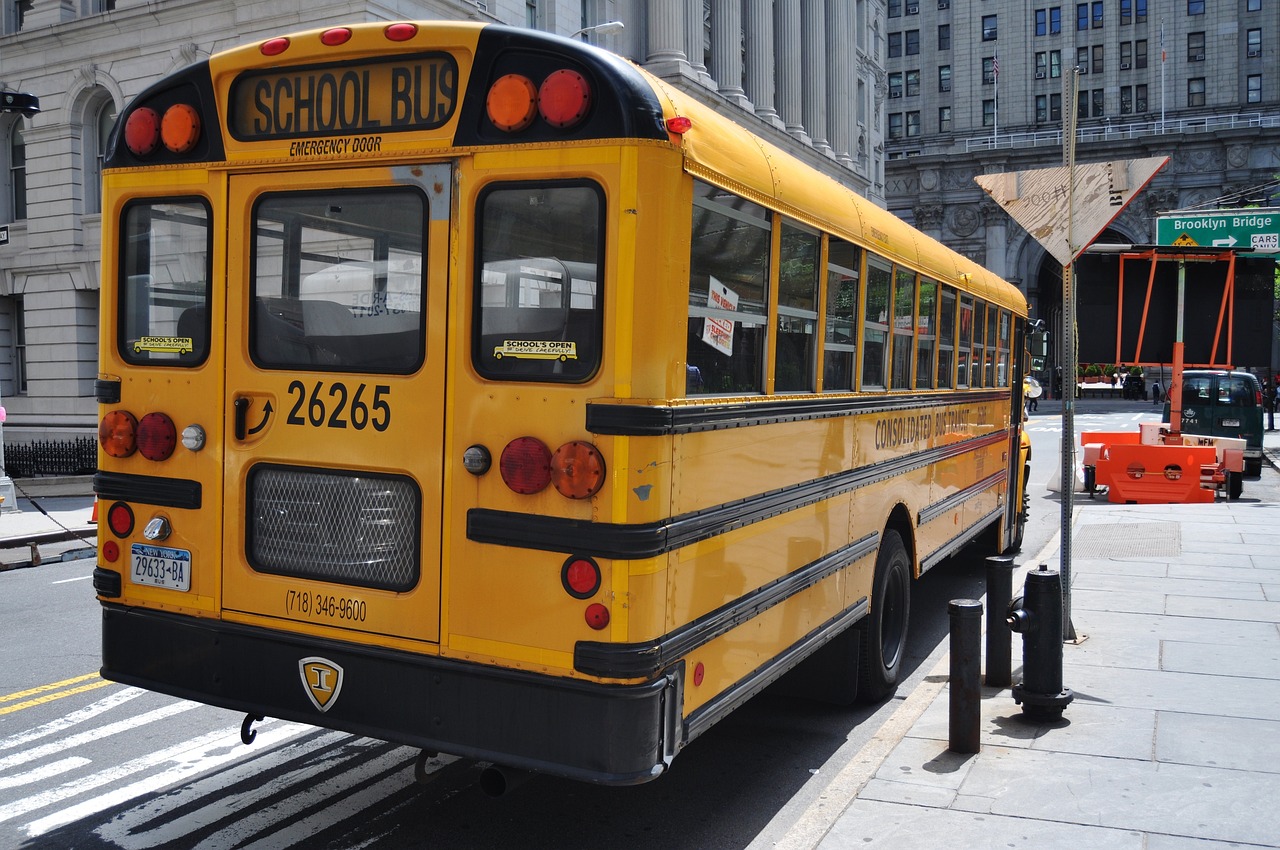
Public Transportation Risks
When we think about urban living, public transportation often comes to mind as a lifeline for getting around the city. However, it's essential to recognize that this convenient mode of travel isn't without its risks. From crowded buses to subway systems, public transportation can sometimes feel like a rollercoaster ride, with its ups and downs, making it crucial for commuters to stay vigilant. Understanding these potential dangers is the first step toward ensuring your safety while navigating the urban landscape.
One of the primary concerns for commuters is the risk of harassment. Unfortunately, crowded spaces can make it easier for inappropriate behavior to occur, leaving individuals feeling uncomfortable or unsafe. Additionally, theft is another significant threat; pickpockets often target unsuspecting passengers, especially during rush hours when everyone is in a hurry and less aware of their surroundings. It's almost like being in a game of chess, where you need to stay two moves ahead to avoid becoming a victim.
Being aware of these risks allows individuals to take proactive measures. For instance, maintaining a strong situational awareness can help you spot potential threats before they escalate. If you notice someone behaving suspiciously, it's better to trust your instincts and move to a different part of the vehicle or station. Remember, your safety is paramount, and being alert can make all the difference.
In addition to personal vigilance, understanding the environment around you is crucial. For example, knowing the layout of the transit station or the bus route can help you navigate more efficiently. Familiarizing yourself with emergency exits and safety protocols can also empower you to act quickly in case of an emergency. Think of it as having a map in a treasure hunt; the more you know your surroundings, the easier it is to find your way to safety.
To further enhance safety while using public transportation, here are some practical safety tips to keep in mind:
- Travel during busy hours: If possible, try to commute during peak times when there are more people around. Crowds can deter potential threats.
- Stay aware of your belongings: Keep your bag zipped and close to your body. Avoid displaying valuable items, such as expensive electronics or jewelry.
- Use your phone wisely: While it's tempting to scroll through social media or check messages, being distracted can make you an easy target. Stay alert and keep your head up.
By implementing these strategies, you can significantly reduce your risk of encountering issues while using public transportation. Remember, safety is a shared responsibility, and being aware of your surroundings not only protects you but also contributes to the overall safety of the community.
Q: What should I do if I feel unsafe on public transportation?
A: If you feel uncomfortable or unsafe, try to move to a different area of the vehicle or station. Trust your instincts and don’t hesitate to alert transit authorities or fellow passengers if necessary.
Q: Are there specific times when public transportation is riskier?
A: Late-night services or off-peak hours can sometimes be riskier due to fewer passengers. It's advisable to travel during busier times when there are more people around.
Q: How can I report harassment or theft on public transportation?
A: Most transit systems have protocols in place for reporting incidents. Look for emergency buttons or contact information for local authorities posted in transit areas. Always report suspicious behavior to transit staff or law enforcement.

Safety Tips for Commuters
Commuting in urban areas can often feel like navigating through a jungle of challenges, where personal safety is a top concern. To help you stay safe while commuting, it’s essential to adopt a few proactive strategies. First and foremost, always stay alert. This means being aware of your surroundings and the people around you. When you’re engrossed in your phone or wearing headphones, you might miss crucial signs of danger. Remember, your intuition is your best friend; if something feels off, trust that gut feeling!
Another important tip is to choose busy transit times. Traveling during peak hours not only increases the number of people around you but also acts as a natural deterrent to potential threats. Criminals tend to shy away from crowded places, so the more bustling your commute, the safer you are likely to be.
Additionally, consider your route carefully. Familiarize yourself with alternative paths that are well-lit and populated. If you have to wait for public transportation, opt for stops that are busy and well-maintained. If you find yourself waiting alone, try to position yourself near other commuters or in view of transit staff.
When it comes to personal belongings, keep your valuables secure and out of sight. A crossbody bag or a backpack that zips closed can be a great choice. Make sure to avoid displaying expensive items like jewelry or electronics, as they can attract unwanted attention. If you’re using your phone to navigate or check the time, be discreet about it.
In the unfortunate event that you feel threatened, it’s crucial to have a plan. Always know where the nearest help points are, whether they be transit staff, police stations, or security personnel. Having a list of emergency contacts saved on your phone can also be a lifesaver in urgent situations. Lastly, consider downloading a few mobile safety apps that can alert friends or authorities if you find yourself in a precarious situation. These apps can provide peace of mind and a sense of security as you commute.
As you navigate through the urban landscape, remember that safety is a shared responsibility. By being vigilant and prepared, you contribute to not only your own safety but also that of fellow commuters. So, keep your eyes open, trust your instincts, and enjoy your journey!
- What should I do if I feel unsafe while commuting? If you feel unsafe, try to move to a crowded area, contact a friend or family member, or reach out to transit staff or law enforcement.
- Are there apps specifically designed for commuter safety? Yes, there are many mobile safety apps available that offer features like emergency alerts, location sharing, and quick access to local resources.
- How can I stay alert during my commute? Avoid distractions like your phone or headphones, and try to engage with your surroundings. Paying attention to the people around you can help you stay aware of any potential threats.
- Is it safe to travel alone at night? While it is possible to travel alone at night, it’s advisable to stick to well-lit and populated areas, and to stay alert and cautious throughout your journey.

Emergency Protocols
In the bustling world of urban life, where the unexpected can happen at any moment, understanding is not just a luxury—it's a necessity. Imagine you're on a crowded subway, and suddenly, a commotion breaks out. What do you do? Having a plan in place can mean the difference between safety and danger. Emergency protocols are essentially the guidelines that help you respond effectively in various threatening situations, ensuring your personal safety and that of those around you.
First and foremost, it’s crucial to familiarize yourself with the emergency procedures specific to the public transportation system you use. Most transit authorities provide safety information through their websites, brochures, and even announcements within the stations. For instance, knowing the location of emergency exits and how to report suspicious behavior can greatly enhance your ability to react swiftly.
Here’s a quick overview of some essential emergency protocols you should keep in mind while using public transport:
- Stay Calm: In any emergency, maintaining composure is vital. Panic can lead to poor decision-making.
- Know Your Exits: Familiarize yourself with the exits of the station or vehicle. In a crisis, knowing where to go can save precious seconds.
- Report Suspicious Activity: If you see something that doesn't seem right, trust your instincts and report it to transit authorities or law enforcement.
- Have a Communication Plan: Inform family or friends about your travel plans and establish a way to contact each other in case of an emergency.
Moreover, many urban areas have implemented emergency alert systems that can send notifications to your mobile device during critical situations. Make sure to sign up for these alerts to stay informed about any potential threats in your vicinity. You can also download safety apps that provide real-time updates and emergency contact features, adding an extra layer of security to your urban commuting experience.
Additionally, it’s important to be aware of the community resources available to you. Local police departments often conduct safety workshops or provide online resources that can enhance your understanding of emergency protocols. Engaging with these resources not only empowers you but also contributes to a safer community overall.
In summary, knowing and practicing emergency protocols is essential for navigating urban environments safely. By staying informed and prepared, you can minimize risks and respond effectively in emergencies, ensuring your safety and that of others. Remember, in a city that never sleeps, being vigilant and proactive is your best defense.
Q: What should I do if I feel unsafe on public transport?
A: If you feel unsafe, try to move to a more populated area of the vehicle or station. Don't hesitate to alert transit staff or law enforcement if you notice suspicious behavior.
Q: How can I stay updated on safety alerts while commuting?
A: Sign up for local transit authority alerts and download safety apps that provide real-time notifications about incidents or emergencies in your area.
Q: What should I include in my emergency contact list?
A: Your emergency contact list should include family members, close friends, and any important local resources such as your local police station or nearby hospitals.
Q: Are there specific safety apps you recommend for urban commuting?
A: Some popular safety apps include SafeTrek, Life360, and Citizen, which offer features like location sharing and emergency alerts.

Environmental Hazards
Urban areas, while bustling with life and opportunity, often harbor a range of that can threaten personal safety. From poorly maintained infrastructure to the chaos of traffic, these risks can manifest in various ways, making it essential for city dwellers to remain vigilant and informed. Imagine walking down a busy street, distracted by your phone, when suddenly a pothole appears out of nowhere. This is just one example of how environmental hazards can catch individuals off guard.
One of the most significant threats in urban settings is the condition of the roads and sidewalks. Cracks, uneven surfaces, and debris can lead to serious accidents, especially for pedestrians and cyclists. According to a recent study, cities with poorly maintained infrastructure report higher rates of accidents involving pedestrians. It's crucial for residents to be aware of their surroundings and to report any hazardous conditions to local authorities. This not only helps protect themselves but also contributes to the overall safety of the community.
Another pressing concern is the risk associated with traffic. Urban areas are often characterized by heavy traffic, which can lead to dangerous situations for both drivers and pedestrians. Understanding traffic patterns and being aware of peak hours can significantly reduce the likelihood of accidents. For instance, a pedestrian crossing at a busy intersection during rush hour is at a higher risk than one crossing during quieter times. Here are some tips for staying safe in traffic:
- Stay alert: Avoid distractions like smartphones when walking near traffic.
- Use crosswalks: Always cross streets at designated crosswalks to ensure visibility.
- Make eye contact: Try to make eye contact with drivers before crossing to ensure they see you.
Moreover, environmental hazards can also stem from the urban heat island effect, where cities become significantly warmer than their rural counterparts due to human activities. This phenomenon can pose health risks, especially during heatwaves, making it essential for individuals to stay hydrated and seek shade. Urban planners can play a crucial role here by incorporating green spaces and trees, which not only help in cooling the city but also enhance the overall quality of life.
In conclusion, while urban environments present numerous opportunities, they also come with their share of environmental hazards. By staying informed and proactive about these risks, individuals can significantly enhance their safety and well-being. Remember, a little awareness goes a long way in navigating the complexities of city life!
Q: What are some common environmental hazards in urban areas?
A: Common hazards include poorly maintained roads, heavy traffic, and the urban heat island effect, which can all pose risks to personal safety.
Q: How can I report hazardous conditions in my city?
A: Most cities have dedicated hotlines or online platforms where residents can report issues like potholes or unsafe sidewalks. Check your local government’s website for details.
Q: What should I do if I encounter a dangerous situation?
A: Stay calm, assess the situation, and if necessary, contact local authorities for assistance. Always prioritize your safety and the safety of others.
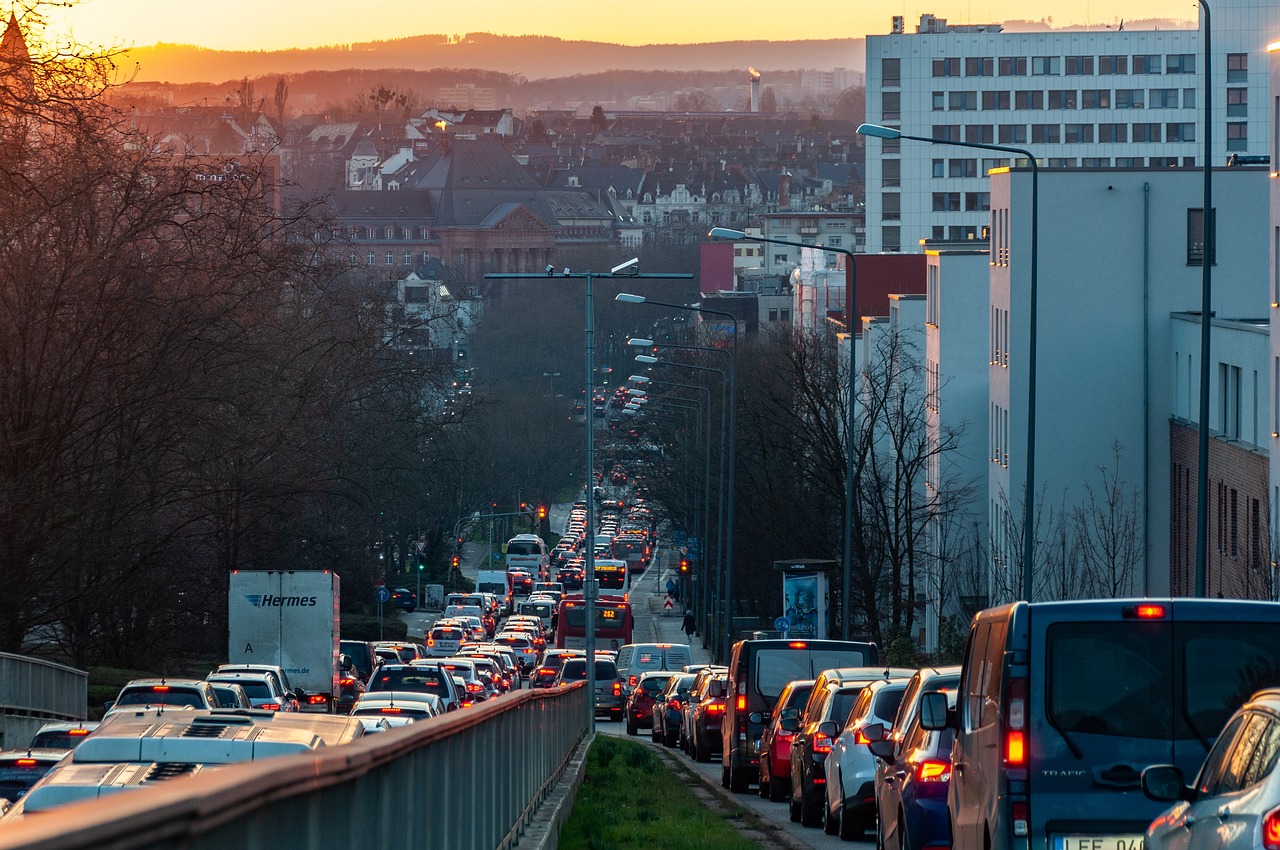
Traffic Safety Awareness
In bustling urban environments, traffic safety awareness is not just a suggestion; it’s a necessity. Imagine navigating a maze of vehicles, cyclists, and pedestrians, all while trying to keep your wits about you. It can feel overwhelming, right? But understanding traffic patterns and safety rules can significantly enhance your ability to move safely through these vibrant streets. For instance, did you know that a staggering number of accidents occur at intersections? This is where awareness becomes crucial. By staying vigilant and recognizing the signs, you can better anticipate the actions of drivers and other pedestrians.
One of the first steps to enhancing your traffic safety awareness is to familiarize yourself with common traffic signs and signals. Knowing what each sign means can help you make informed decisions while crossing streets or navigating busy intersections. Here’s a quick overview of some essential traffic signs:
| Traffic Sign | Meaning |
|---|---|
| Stop Sign | Come to a complete stop before proceeding. |
| Yield Sign | Give way to other vehicles and pedestrians. |
| Crosswalk Sign | Indicates a designated crossing area for pedestrians. |
| Speed Limit Sign | Maximum speed allowed in that area. |
Moreover, being aware of your surroundings is key. This means not just looking out for vehicles but also being mindful of cyclists and scooters that may be zipping past. Have you ever noticed how a little distraction, like checking your phone, can lead to a near-miss? It’s vital to keep your eyes on the road and your ears open to the sounds around you. When walking, try to avoid wearing headphones; this can help you stay alert to your environment.
Additionally, understanding pedestrian rights is crucial. In many urban areas, pedestrians have the right of way at crosswalks, but this doesn’t mean you should assume every driver will stop. Always make eye contact with drivers before crossing, and be prepared to wait if a vehicle is approaching. Remember, safety first!
Lastly, let’s talk about the importance of urban planning in promoting traffic safety. Well-planned cities often incorporate features such as speed bumps, dedicated bike lanes, and ample signage to create safer environments for all road users. Engaging with local community boards or city planners can be a great way to advocate for improvements in your area, ensuring that safety remains a top priority.
In conclusion, traffic safety awareness is a shared responsibility. By staying informed, vigilant, and engaged, we can all contribute to making urban areas safer for everyone. So next time you step out, remember: your awareness can make a difference!
- What should I do if I witness a traffic accident?
If you witness an accident, ensure your safety first, then call emergency services. Provide them with as much detail as possible.
- How can I educate my children about traffic safety?
Teach them the importance of looking both ways before crossing, understanding traffic signals, and being aware of their surroundings.
- Are there any apps that can help with traffic safety awareness?
Yes, there are several apps designed to improve awareness and provide real-time traffic updates, which can be beneficial for both drivers and pedestrians.
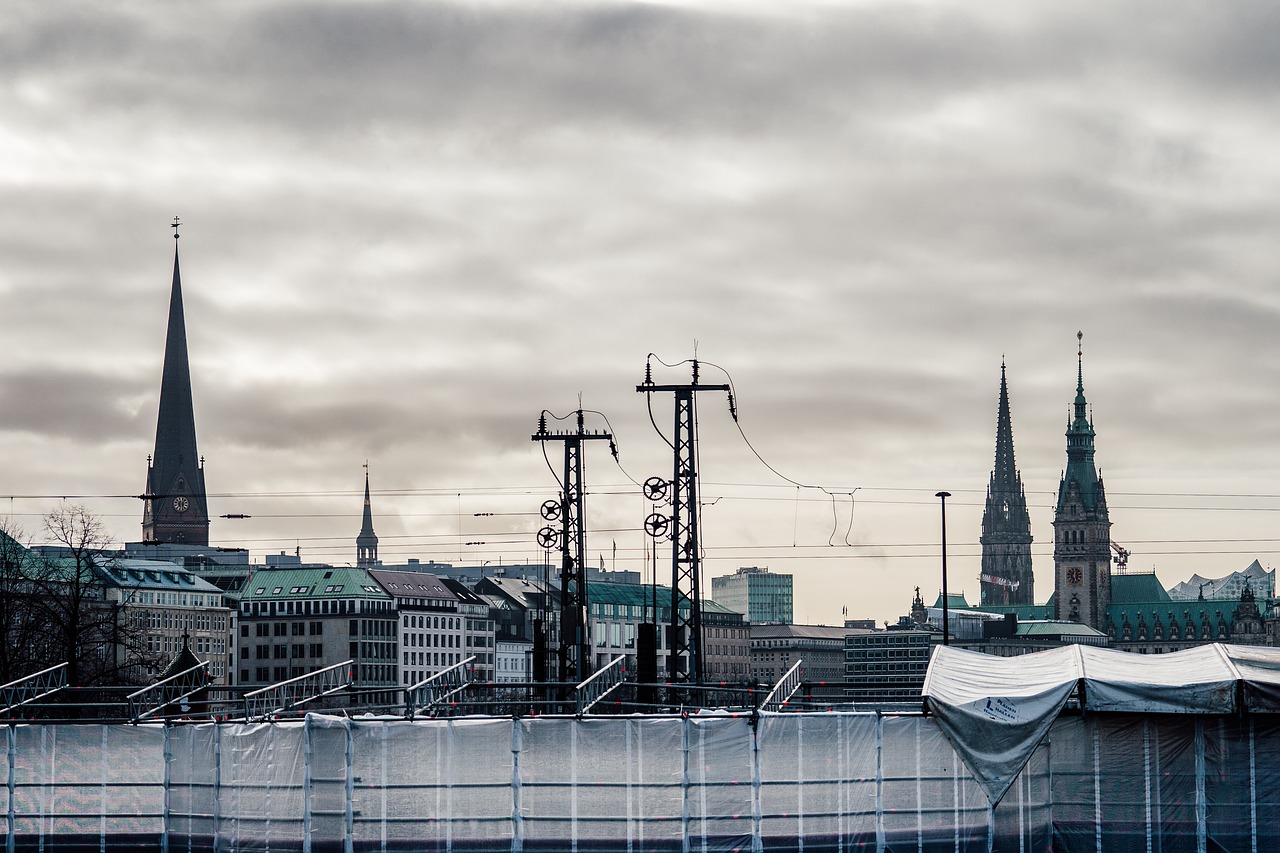
Urban Planning and Safety
Urban planning is more than just laying out streets and buildings; it's about creating a safe, functional, and inviting environment for residents and visitors alike. Effective urban planning plays a crucial role in minimizing risks associated with environmental hazards and enhancing overall personal safety. Imagine walking through a city where every corner has been designed with safety in mind—where parks are well-lit, streets are easily navigable, and public spaces encourage community engagement. This vision can become a reality with thoughtful urban design.
One of the primary goals of urban planning is to create a layout that reduces the potential for crime and accidents. Well-planned neighborhoods often feature:
- Mixed-use developments: These areas combine residential, commercial, and recreational spaces, encouraging a vibrant community atmosphere and increasing foot traffic, which can deter criminal activity.
- Accessible public spaces: Parks and communal areas that are easily accessible promote community interaction and provide safe havens for residents.
- Effective transportation systems: Well-designed public transit options reduce reliance on cars, leading to less traffic congestion and a lower likelihood of accidents.
Moreover, urban planners must consider factors such as visibility and natural surveillance. Buildings should be designed with large windows facing the street, allowing for greater observation of public spaces. This concept, known as “eyes on the street,” can significantly deter crime by ensuring that potential offenders are aware they are being watched. Additionally, incorporating green spaces not only enhances the aesthetic appeal of urban areas but also contributes to community well-being, providing a sense of safety and comfort.
It's also essential for urban planning to involve community input. When residents participate in the planning process, they can voice their concerns and desires, leading to developments that truly reflect the needs of the community. This collaborative approach can foster a sense of ownership and responsibility among residents, making them more vigilant and proactive about safety. Furthermore, planners should prioritize the maintenance of infrastructure, as poorly maintained roads and sidewalks can lead to accidents and injuries.
In conclusion, the relationship between urban planning and personal safety is undeniable. By implementing thoughtful design principles and engaging with the community, urban planners can create environments that not only reduce risks but also enhance the quality of life for all residents. As we continue to develop our urban spaces, let’s keep safety at the forefront of our minds, ensuring that our cities are not just places to live, but safe havens for everyone.
Q1: How does urban planning affect personal safety?
Urban planning affects personal safety by designing environments that minimize risks and promote community engagement. Features like mixed-use developments, proper lighting, and accessible public spaces can deter crime and enhance safety.
Q2: What role do community members play in urban planning?
Community members play a crucial role by providing input and feedback during the planning process. Their insights help ensure that developments meet the actual needs and concerns of those who live in the area.
Q3: Can urban planning reduce crime rates?
Yes, effective urban planning can reduce crime rates by creating environments that promote visibility, increase foot traffic, and foster community interaction, all of which can deter criminal activity.
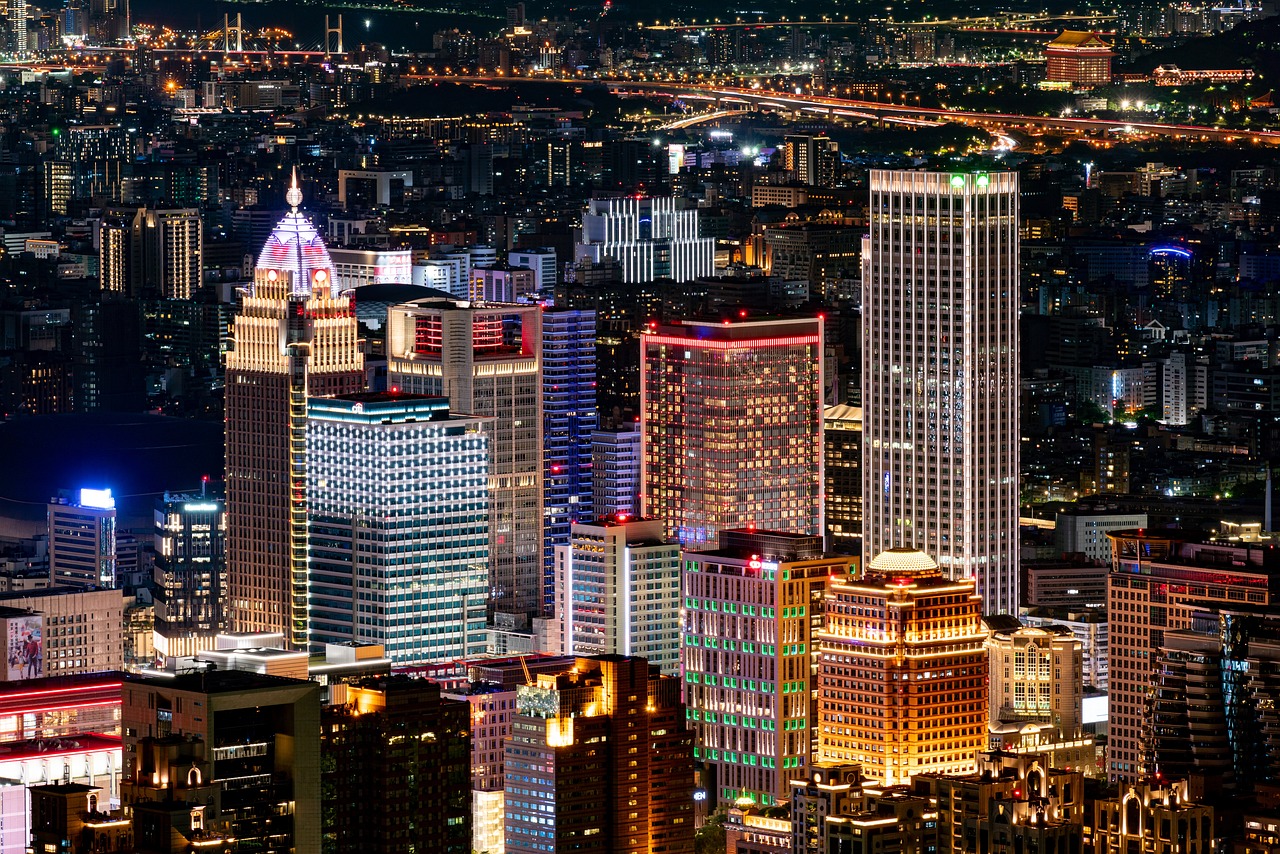
Social Dynamics and Safety
Understanding the social dynamics in urban areas is crucial for recognizing potential threats to personal safety. Urban environments are often bustling with diverse populations, each bringing their own culture, values, and behaviors. This vibrant mix can sometimes lead to tension and conflict, particularly when different groups interact. For instance, gang activity is a significant concern in many cities, where territorial disputes can escalate quickly, posing risks not only to gang members but also to innocent bystanders.
Moreover, social unrest, whether due to political protests or community grievances, can create unpredictable situations that may endanger individuals. It's essential to be aware of the current social climate in your area. Are there ongoing protests? Have there been reports of increased gang activity? Staying informed can help you navigate these complexities and avoid potentially dangerous situations.
One effective way to enhance personal safety in urban settings is through community engagement. By actively participating in local organizations, neighborhood watch programs, or community events, individuals can build networks of support. These connections foster a sense of community and shared vigilance, making it easier to identify and address safety concerns collectively. When residents know each other and look out for one another, it creates a safer environment for everyone.
Another vital aspect of social dynamics is the importance of conflict resolution skills. In a city where tensions can flare up quickly, being equipped to handle disputes calmly and effectively can make a significant difference. Learning how to de-escalate situations, communicate clearly, and find common ground can prevent conflicts from escalating into violence. Consider taking workshops or courses that focus on these skills; they can be invaluable in both personal and public interactions.
Additionally, understanding the local culture and social norms can provide insights into how to navigate various situations safely. For example, recognizing when certain areas may be more prone to conflict or understanding the unwritten rules of behavior in different neighborhoods can help you avoid potentially dangerous encounters. It's like learning the lay of the land—the more you know, the better prepared you are to handle unexpected challenges.
In conclusion, social dynamics play a critical role in personal safety within urban areas. By engaging with the community, developing conflict resolution skills, and staying informed about local issues, individuals can significantly enhance their safety and well-being. Remember, safety is not just an individual responsibility; it's a community effort.
- What are the primary social dynamics that affect safety in urban areas?
Social dynamics such as gang activity, community engagement, and social unrest significantly influence safety in urban environments. - How can I engage with my community to improve safety?
Participate in local events, join neighborhood watch programs, and connect with local organizations to build relationships and enhance community vigilance. - What skills can help me resolve conflicts effectively?
Developing communication skills, practicing active listening, and learning de-escalation techniques can help you navigate conflicts more effectively. - How do I stay informed about local safety issues?
Follow local news, engage with community groups on social media, and attend neighborhood meetings to stay updated on safety concerns.

Community Engagement
Engaging with local communities is not just a nice-to-have; it's a vital strategy for enhancing personal safety in urban areas. When individuals come together, they create a network of support that can significantly reduce crime and foster a sense of belonging. Think of it as a safety net—when one strand is strong, the entire net holds better. Community engagement encourages residents to look out for one another, share information, and collaborate on safety initiatives.
One effective way to enhance community engagement is through the establishment of local neighborhood watch programs. These initiatives empower residents to take an active role in monitoring their surroundings and reporting suspicious activities. By fostering a sense of responsibility, individuals feel more connected to their neighborhoods, which can lead to a dramatic decrease in crime rates. Additionally, community meetings can serve as platforms for discussing safety concerns and sharing resources.
Moreover, social media has transformed the way communities engage. Platforms like Facebook and Nextdoor allow residents to communicate quickly and effectively. They can share alerts about crime in real-time, organize community events, and offer support to those in need. This digital engagement complements traditional community efforts, making it easier for individuals to stay informed and connected.
Here are some key benefits of community engagement in enhancing personal safety:
- Increased Awareness: Residents become more aware of their surroundings and potential threats when they actively participate in community safety initiatives.
- Stronger Relationships: Building relationships within the community fosters trust, making it easier to communicate and collaborate on safety concerns.
- Shared Resources: Communities can pool resources for safety measures, such as neighborhood watch signs, street lighting improvements, or community patrols.
In conclusion, community engagement is a powerful tool for enhancing personal safety in urban environments. By fostering connections, sharing information, and working together, residents can create a safer atmosphere for everyone. Just like a well-oiled machine, when all parts work together, the outcome is not only efficient but also secure.
Q1: How can I get involved in my local community safety initiatives?
A1: You can start by attending community meetings, joining local neighborhood watch programs, or connecting with community organizations focused on safety.
Q2: What are some effective ways to communicate safety concerns in my neighborhood?
A2: Utilize social media platforms, community apps, or organize regular meetings to discuss safety issues and share updates with your neighbors.
Q3: Are there any resources available for starting a neighborhood watch program?
A3: Yes, many local police departments provide resources and support for establishing neighborhood watch programs. You can also find guidelines online through community safety websites.
Q4: How can technology assist in community engagement for safety?
A4: Technology can facilitate communication through apps and social media, allowing residents to share alerts and organize events quickly.

Conflict Resolution Skills
In the bustling atmosphere of urban life, conflicts can arise unexpectedly. Whether it's a disagreement with a neighbor or a misunderstanding in a crowded public space, having is essential for maintaining personal safety and peace of mind. These skills not only help in de-escalating tense situations but also empower individuals to navigate their environment with confidence.
Imagine walking down a busy street when someone bumps into you. Instead of reacting impulsively, a person equipped with conflict resolution skills would take a moment to assess the situation. They might ask, “Was that an accident?” or “Are you okay?” This simple approach can transform a potential confrontation into a moment of understanding. By staying calm and composed, individuals can diffuse tension and prevent conflicts from escalating into more serious threats.
One of the key elements of effective conflict resolution is active listening. This involves not just hearing what the other person is saying but truly understanding their perspective. When individuals feel heard, they are more likely to respond positively, which can lead to a resolution that satisfies both parties. Moreover, practicing empathy—putting oneself in the other person's shoes—can significantly enhance communication and foster a cooperative atmosphere.
Another important aspect is being aware of non-verbal cues. Body language, facial expressions, and tone of voice can convey emotions and intentions that words alone may not express. For instance, if someone appears tense or defensive, it might be wise to adjust one’s own body language to appear more open and approachable. This can help in creating a safer space for dialogue and understanding.
In urban settings, where tensions can run high, it’s also beneficial to have a few strategies in your back pocket. Here are some effective techniques for resolving conflicts:
- Stay Calm: Take deep breaths and remain composed to think clearly.
- Use "I" Statements: Express feelings without blaming others, e.g., “I feel upset when…”
- Seek Common Ground: Identify shared interests or goals to foster collaboration.
- Know When to Walk Away: If a situation becomes too heated, it’s okay to disengage temporarily.
Moreover, engaging in community programs that focus on conflict resolution can enhance these skills. Many urban areas offer workshops or classes aimed at teaching residents how to handle disputes effectively. These programs not only provide valuable tools but also create a sense of community, where individuals can support each other in maintaining a peaceful environment.
Ultimately, mastering conflict resolution skills is about more than just avoiding fights; it's about building a more harmonious urban life. By understanding and applying these techniques, individuals can contribute to a culture of respect and cooperation, making their neighborhoods safer and more enjoyable for everyone.
Q: What are conflict resolution skills?
A: Conflict resolution skills are techniques that help individuals manage and resolve disagreements in a constructive manner, promoting understanding and cooperation.
Q: Why are these skills important in urban areas?
A: Urban areas can be crowded and stressful, leading to potential conflicts. Having these skills helps individuals navigate interactions safely and peacefully.
Q: How can I improve my conflict resolution skills?
A: You can improve these skills through practice, active listening, empathy, and by participating in community workshops focused on conflict resolution.
Q: What should I do if a conflict escalates?
A: If a conflict escalates, it’s essential to remain calm, avoid confrontation, and, if necessary, remove yourself from the situation to ensure your safety.
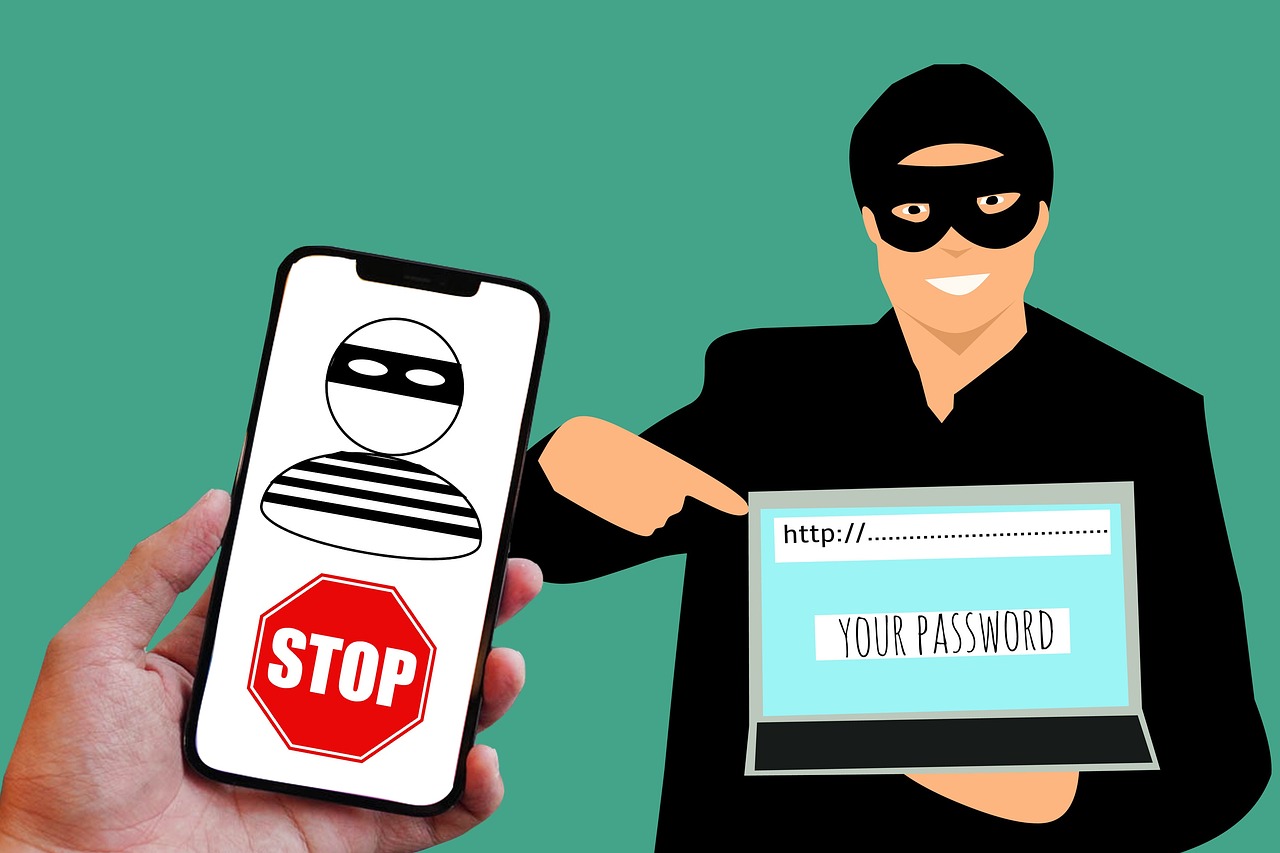
Technological Safety Solutions
In today's fast-paced urban environments, the need for personal safety has never been greater. Fortunately, advancements in technology are stepping up to the plate, offering innovative solutions that can significantly enhance our safety. From mobile applications designed to alert friends and family in emergencies to smart surveillance systems that keep an eye on our surroundings, the digital age is transforming how we protect ourselves in urban settings.
One of the most notable developments in personal safety technology is the rise of mobile safety apps. These applications are more than just digital tools; they are lifelines that can make a real difference in critical situations. For instance, many apps allow users to send out emergency alerts with just a tap, share their location with trusted contacts, and access local resources such as nearby police stations or hospitals. Imagine walking alone at night and feeling uneasy; with a quick press of a button on your phone, you can notify your friends and family of your exact location, providing peace of mind in potentially dangerous situations.
Moreover, these apps often come equipped with features such as real-time tracking and safety check-ins, which can be particularly beneficial for individuals commuting in less-than-ideal circumstances. By utilizing these tools, users can enhance their situational awareness and take proactive steps to avoid risky scenarios.
In addition to mobile applications, smart urban infrastructure is another exciting avenue for improving safety in cities. Cities are increasingly integrating smart technologies into their infrastructure, which can dramatically enhance public safety. For example, improved street lighting that adjusts based on pedestrian traffic can deter criminal activity. Similarly, the installation of surveillance cameras equipped with advanced analytics can help law enforcement respond more swiftly to incidents, ultimately creating a safer urban environment for everyone.
| Technology | Benefits |
|---|---|
| Mobile Safety Apps | Emergency alerts, location sharing, access to resources |
| Smart Street Lighting | Increased visibility, reduced crime rates |
| Surveillance Systems | Real-time monitoring, quicker law enforcement response |
As urban areas continue to evolve, the integration of technology into safety measures will play a crucial role in how we navigate our environments. However, while these technological solutions are invaluable, they are most effective when combined with community awareness and personal vigilance. After all, technology is a tool; it’s up to us to use it wisely and responsibly.
- What are some popular mobile safety apps? Some popular options include Life360, bSafe, and Noonlight, which offer various features for personal safety.
- How can smart technology improve urban safety? Smart technology can enhance safety through better lighting, surveillance systems, and real-time data analysis to prevent crime.
- Are there any downsides to relying on technology for safety? While technology offers many benefits, over-reliance can lead to complacency; it's essential to remain aware of your surroundings.

Mobile Safety Apps
In today's fast-paced urban environments, have become indispensable tools for enhancing personal security. Imagine having a pocket-sized guardian that not only keeps you informed but also helps you take proactive measures to ensure your safety. These applications provide a variety of features designed to cater to different safety needs, making them essential for anyone navigating the complexities of city life.
One of the most significant advantages of mobile safety apps is their ability to send emergency alerts quickly. With just a few taps on your smartphone, you can notify friends, family, or even local authorities that you are in distress. This feature can be a lifesaver in critical situations where every second counts. For instance, apps like Life360 and bSafe allow users to share their location in real-time, ensuring that help is always just a call away.
Moreover, these apps often come equipped with tools for location sharing, which can be particularly useful when you're out late or in unfamiliar areas. By enabling location sharing with trusted contacts, you create a safety net that can provide peace of mind. Imagine walking through a dimly lit street while your friends know exactly where you are. It’s like having a safety buddy, even when you're alone!
Additionally, many mobile safety apps offer features such as quick access to local resources. This can include contact information for nearby hospitals, police stations, or even safe zones. Having this information readily available can empower individuals to respond effectively in emergencies. For example, if you were to witness a crime or find yourself in a dangerous situation, knowing the nearest safe place can make all the difference.
In terms of usability, most of these apps are designed with user-friendliness in mind. The interfaces are intuitive, allowing users to navigate through various features effortlessly. Some popular mobile safety apps include:
- SafeTrek: A personal safety app that allows users to hold down a button when they feel unsafe and release it when they are safe. If the button is released without entering a pin, authorities are notified.
- Noonlight: This app connects users to emergency services with a simple tap. It also provides a safe ride home option.
- Circle of 6: Designed for college students, this app allows users to quickly send alerts to their friends in case of trouble.
As urban areas continue to evolve, the integration of technology into personal safety measures is becoming increasingly vital. With the rise of smart urban infrastructure, mobile safety apps are also adapting. Many are now incorporating features like GPS tracking and geofencing, which can alert users when they enter or leave designated safe areas. This means that your smartphone can act as a personal security system, alerting you if you stray too far from your intended path.
In conclusion, mobile safety apps are not just a trend; they are a necessary evolution in our approach to personal safety in urban environments. By leveraging technology, we can take significant steps toward protecting ourselves and our loved ones. So, the next time you step out into the bustling city, make sure your mobile safety app is ready to assist you. After all, being prepared is the first step toward ensuring your safety.
Q: Are mobile safety apps free to use?
A: Many mobile safety apps offer free versions with basic features, while others may require a subscription for premium functionalities.
Q: How do I choose the right safety app for me?
A: Consider your specific needs, such as location sharing, emergency alerts, and user interface. Reading reviews and testing a few apps can help you find the best fit.
Q: Can these apps work without an internet connection?
A: Most mobile safety apps require an internet connection to function fully, especially for features like location sharing. However, some may have limited functionality offline.
Q: Are mobile safety apps effective in real emergencies?
A: While no app can guarantee safety, many users have reported that mobile safety apps have helped them in emergencies by providing quick access to help and resources.

Smart Urban Infrastructure
In the hustle and bustle of urban life, is becoming a game changer for personal safety. Imagine walking through a city where technology seamlessly integrates with everyday life, enhancing not just convenience but also security. Smart infrastructure includes everything from intelligent street lighting that adjusts based on activity levels to advanced surveillance systems that monitor public spaces in real-time. This technology acts as a safety net, making urban areas less intimidating and more secure for residents and visitors alike.
One of the most effective implementations of smart urban infrastructure is the use of connected streetlights. These lights can detect movement and adjust their brightness accordingly, illuminating dark corners and discouraging potential criminal activity. Furthermore, they can be equipped with sensors that report issues such as outages or malfunctions, ensuring that the city remains well-lit and safe at all times. This not only enhances personal safety but also reduces energy consumption, making it an eco-friendly solution.
Moreover, surveillance systems integrated with artificial intelligence can analyze footage to identify suspicious behavior and alert authorities in real-time. This proactive approach allows law enforcement to respond swiftly to incidents, potentially preventing crimes before they escalate. Imagine a scenario where a person is in distress, and the system automatically notifies nearby security personnel, drastically reducing response times and enhancing safety.
Additionally, smart urban infrastructure can help with traffic management, reducing the likelihood of accidents. By utilizing real-time data from vehicles and pedestrians, cities can optimize traffic flow and ensure safer crossings. This is especially important in densely populated areas where the risk of pedestrian accidents is higher. The integration of smart traffic signals that respond to real-time conditions can significantly improve safety for everyone on the road.
Furthermore, the implementation of mobile applications linked to smart urban infrastructure allows citizens to report issues, receive alerts, and access safety resources at their fingertips. For instance, a user might receive a notification about a nearby incident, prompting them to take a safer route home. This interconnectedness fosters a sense of community and shared responsibility for safety.
In conclusion, the evolution of smart urban infrastructure is paving the way for safer cities. By leveraging technology, urban planners and local governments can create environments that not only deter crime but also promote a sense of security among residents. As cities continue to grow, the integration of smart solutions will be essential in ensuring that personal safety is not just a luxury but a standard for everyone.
- What is smart urban infrastructure?
Smart urban infrastructure refers to the integration of technology into city planning and management to enhance safety, efficiency, and quality of life for residents. - How does smart lighting improve safety?
Smart lighting adjusts its brightness based on activity levels, illuminating dark areas and deterring criminal activity. - Can surveillance systems really prevent crime?
Yes, modern surveillance systems equipped with AI can analyze behavior and alert authorities to potential threats, allowing for quicker responses. - Are there mobile apps for urban safety?
Absolutely! Many cities offer mobile applications that provide safety alerts, allow users to report issues, and access local resources. - What role does community engagement play in urban safety?
Community engagement fosters shared vigilance and resource sharing, making neighborhoods safer through collective efforts.
Frequently Asked Questions
- What are the most common personal safety threats in urban areas?
The most common personal safety threats in urban areas include street crimes like muggings and pickpocketing, risks associated with public transportation, environmental hazards such as traffic dangers, and social dynamics that may lead to conflicts or gang-related activities.
- How can I stay safe from street crimes?
To stay safe from street crimes, it’s essential to remain aware of your surroundings, avoid distractions like using your phone while walking, stay in well-lit areas, and travel in groups when possible. Additionally, familiarize yourself with common scams and tactics used by criminals.
- What safety tips should commuters follow when using public transportation?
Commuters should stay alert, avoid empty train cars, keep personal belongings secure, and choose busy transit times for travel. It’s also wise to know the emergency protocols of the transit system and to have a plan in case of an emergency.
- How can I report a crime in my area?
You can report a crime by contacting local law enforcement through their non-emergency number or visiting a nearby police station. It’s also helpful to gather as much information as possible about the incident to assist authorities in their response.
- What role does community engagement play in personal safety?
Community engagement fosters a supportive environment where residents can share information, look out for one another, and collaborate on safety initiatives. Building networks of support enhances overall safety by promoting shared vigilance and resources.
- Are there any technological solutions for improving personal safety?
Yes! There are numerous technological solutions available, such as mobile safety apps that provide emergency alerts and location sharing. Additionally, smart urban infrastructure, including enhanced lighting and surveillance systems, can significantly improve safety in urban areas.
- How can urban planning impact personal safety?
Effective urban planning can minimize environmental hazards and improve safety by ensuring proper infrastructure maintenance, creating safe pedestrian pathways, and enhancing community spaces. Thoughtful designs can lead to safer environments for both residents and visitors.



















